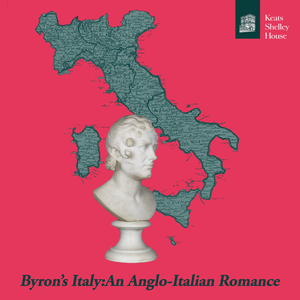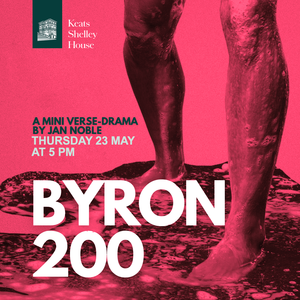Byron’s Italy: An Anglo-Italian Romance - An Exhibition
‘Byron’s Italy: An Anglo-Italian Romance’: An Exhibition at the Keats-Shelley House
19th April 2024 - 22nd December 2024
A bicentenary exhibition featuring two major new acquisitions dedicated to Bryon’s relationship to Italian culture, language and literature and his lasting legacy in Italy. The exhibition will also feature line drawings by architect, Roberto Einaudi.
Lord Byron’s (1788-1824) life and works were shaped by his travels outside of Britain. Once Italy was again accessible following the end of the Napoleonic Wars, Byron travelled to the peninsula, remaining there for seven years (1816-1823). During this time, he wrote many of his greatest works, including Childe Harold’s Pilgrimage, Canto IV (1818), The Prophecy of Dante (1821), and Don Juan (1819-24). The experiences Byron had and the relationships he made and lost informed his politics and poetic output as much as his biography.
Lord Byron, like many Romantic artists, cherished Italy for its history and art but it was Byron’s understanding of the Italian language and culture which gave him a more intimate connection. In a letter to John Murray dated 1820, he wrote ‘I have lived in their houses and in the heart of their families’, implying his deep knowledge of the country and its people. When Mary Shelley defined the ‘Anglo-Italian’ in an article for The Westminster Review in 1826, she declared Byron as the archetype of this new ‘sect’. Mary Shelley considered his poem Beppo: A Venetian Story (1818) as the starting point of the ‘Anglo-Italian literary tradition’.
Navigated through Byron’s poetic works and letters, this exhibition explores Byron’s seven years in Italy, his engagement with local politics and people, and legacy Byron’s Italian legacy. The exhibition is divided into two parts, the first deals with Byron’s time in three Italian cities – Venice, Ravenna and Pisa. The second part looks at Byron’s works in Italian translation and the lasting impact of these texts on the politics of the peninsula.
RECENT EVENTS
|
Friday, April 19, 2024 - 10:00 to Sunday, December 22, 2024 - 18:00 |
Tuesday, June 25, 2024 - 19:30 |
Thursday, May 23, 2024 - 17:00 |
Thursday, May 9, 2024 - 17:00 |



















